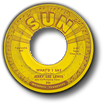
Class Profile Project Descriptor and Rubric
Spring Semester 2014
Total Points: 50
10 points for the individual questions
40 points for the Class Profile Report
Goal:
To discover the multicultural identity of your students by becoming familiar with relevant aspects of their background knowledge and experiences (Danielson: Domain 1)
Relation to Knowledge Base:
Tenet 3: One who understands, respects, and values diversity
Who? What?
Each student will compile a list of five questions based on the nine ABC identifiers to use in creating a Class Profile questionnaire in small content groups. For example, you could ask what your students see in their backyards. This question could represent Class or Geography. Each person will administer the survey to one class at their home school.
When?
The five questions are due in class on March 7 as a hard copy. You will work with your content group on March 7 to create a class profile questionnaire from the individual questions. The Class Profile Report is due in class on March 21 as hard copies.
Why?
Knowing your students’ background knowledge and experiences helps you design meaningful learning goals for your students in an engaging and comfortable environment. Your teaching methods, learning activities, instructional materials, and evaluation strategies should be appropriately designed for all students in your classes.
For example, a common topic in foreign language classes is travel, but teaching specialized vocabulary related to air travel when many students have never flown would not be an appropriate lesson based on their background knowledge and experiences (Danielson Domain 1).
Knowing your students also increases your ability to create a learning environment in which students feel comfortable enough to take chances (Danielson Domain 2). For example, some students may feel uncomfortable drawing attention to themselves due to their cultural upbringing regarding pride and individual accomplishments. Rather than calling on them individually, you would consider other strategies to help them show what they know (Danielson Domain 3).
How?
Step One: Create five individual questions based on any of the following cultural identifiers: age, class, ethnicity, exceptionality, gender, geography, language, religion, sexual orientation. Match each question to one of the identifiers. For example, you might ask, “What family celebration did you last attend?” and put it in the category of ethnicity.
Step Two: Bring your five questions to class on March 7.
Step Three: Share your questions with your group.
Step Four: Create your class profile questionnaire in your small group with one question per descriptor—9 total.
Step Five: Administer the questionnaire to one of your classes. Submit results and report by March 21. Bring to class as a hard copy.
Class Profile Questions: 10 points
Write five questions you could include on the content questionnaire. Connect the questions to one of Gollnick and Chinn’s 9 variables listed on the ABC Who Are We? project descriptor and in your textbook, Chapter One. Bring to class on March 7 as a hard copy for group work.
Report Contents: 40 points
Paragraph 1: Briefly describe the demographics of your classroom (school district, content area, class level, size of class, student gender, ethnicity, language, and any other info you might have).
Paragraph 2: Tell me when you gave the questionnaire, how many students responded, and how they answered. You can create an excel, pie chart, bar graph, or table for this.
Paragraph 3: Tell me what you learned from this activity and how it will help you become a better teacher.
Attachments: Five Questions and Class Profile Questionnaire.
LINK to the assignment instructions and rubric:
A printer friendly copy of this assignment,
including the rubric for class profile,
is included as a .pdf file linked here.
Click the logo above to open the .pdf file in Adobe Reader.
If you don't have the Reader on your pc,
here's a link to download the free and very safe software:
http://get.adobe.com/reader/

Class Profile Instructions
Spring Semester 2012
Assigned on Monday, January 30, 2012. This assignment was for spring semester 2012 only.
ADDENDUM of April 12, 2012:
Thanks to Erica Wortham for sharing her Class Profile paper and ABC Poem as a model example. Links to the paper and poem are available at the top of the right sidebar on this page.
Total Points: 100
25 points for the individual questions
25 points for the Survey Report
50 points for the ABC Poem
Goal:
To discover the multicultural identity of your students by becoming familiar with relevant aspects of their background knowledge and experiences (Pathwise: Domain A)
Relation to Knowledge Base:
Tenet 3: One who understands, respects, and values diversity
Who? What?
Each student will compile a list of five questions to use in creating a Class Profile questionnaire in small content groups. Each person will administer the survey to one class in their third rotation.
When?
The five questions are due in class on Feb 3 as a hard copy to the professor. The class profile report and poem are due in class on Feb. 24 as hard copies.
Why?
Knowing your students’ background knowledge and experiences helps you design meaningful learning goals for your students in an engaging and comfortable environment. Your teaching methods, learning activities, instructional materials, and evaluation strategies should be appropriately designed for all students in your classes.
For example, a common topic in foreign language classes is travel, but teaching specialized vocabulary related to air travel when most of your students have never flown would not be an appropriate lesson based on their background knowledge and experiences.
Knowing your students also increases your ability to create a learning environment in which students feel comfortable enough to take chances. For example, some students may feel uncomfortable drawing attention to themselves due to their cultural upbringing regarding pride and individual accomplishments. Rather than calling on them individually, you would consider other strategies to help them show what they know.
How?
Step One: Create five individual questions based on any of the following cultural identifiers: language, race, gender, social class, age, religion, exceptionality, geographic region, rural/urban/suburban, and ethnicity. Match each question to one of the identifiers. For example, you might ask, “What family celebration did you last attend?” and put it in the category of ethnicity.
Step Two: Bring your five questions to class with your name and date on it on Feb. 3.
Step Three: Share your questions with your group.
Step Four: Create your class profile questionnaire in your small group with one question per descriptor (language, race, gender, social class, age, religion, exceptionality, geographic region, rural/urban/suburban, and ethnicity--10 total)
Step Five: Administer the questionnaire to one of your classes. Submit results and report by Feb. 24. Bring to class as a hard copy.
Class Profile Questions: 25 points
Write five questions you could include on the content questionnaire. Connect the questions to one of Banks' ten variables listed on the ABC Who Are We? project descriptor. Bring to class on Feb. 3 as a hard copy to turn in.
Report Contents: 25 points
Paragraph 1: Briefly describe the demographics of your classroom (school district, content area, class level, size of class, student gender, ethnicity, language, and any other info you might have).
Paragraph 2: Tell me when you gave the questionnaire, how many students responded, and how they answered. You can create an excel or table for this.
Paragraph 3: Tell me what you learned from this activity and how it will help you become a better teacher.
ABC Poem: 50 points
Follow the same directions as for your own poem. You are creating a "profile" of your class using the same 10 variables.
LINK to the assignment instructions and rubric:
A printer friendly copy of this assignment,
including the rubric for class profile and rubric for ABC poem,
is included as a .pdf file linked below.
Class Profile Assignment
For a printer-friendly version of this webpage,
click the logo above to open a .pdf file in Adobe Reader.
If you don't have the Reader on your pc,
here's a link to download the free and very safe software:
http://get.adobe.com/reader/

















